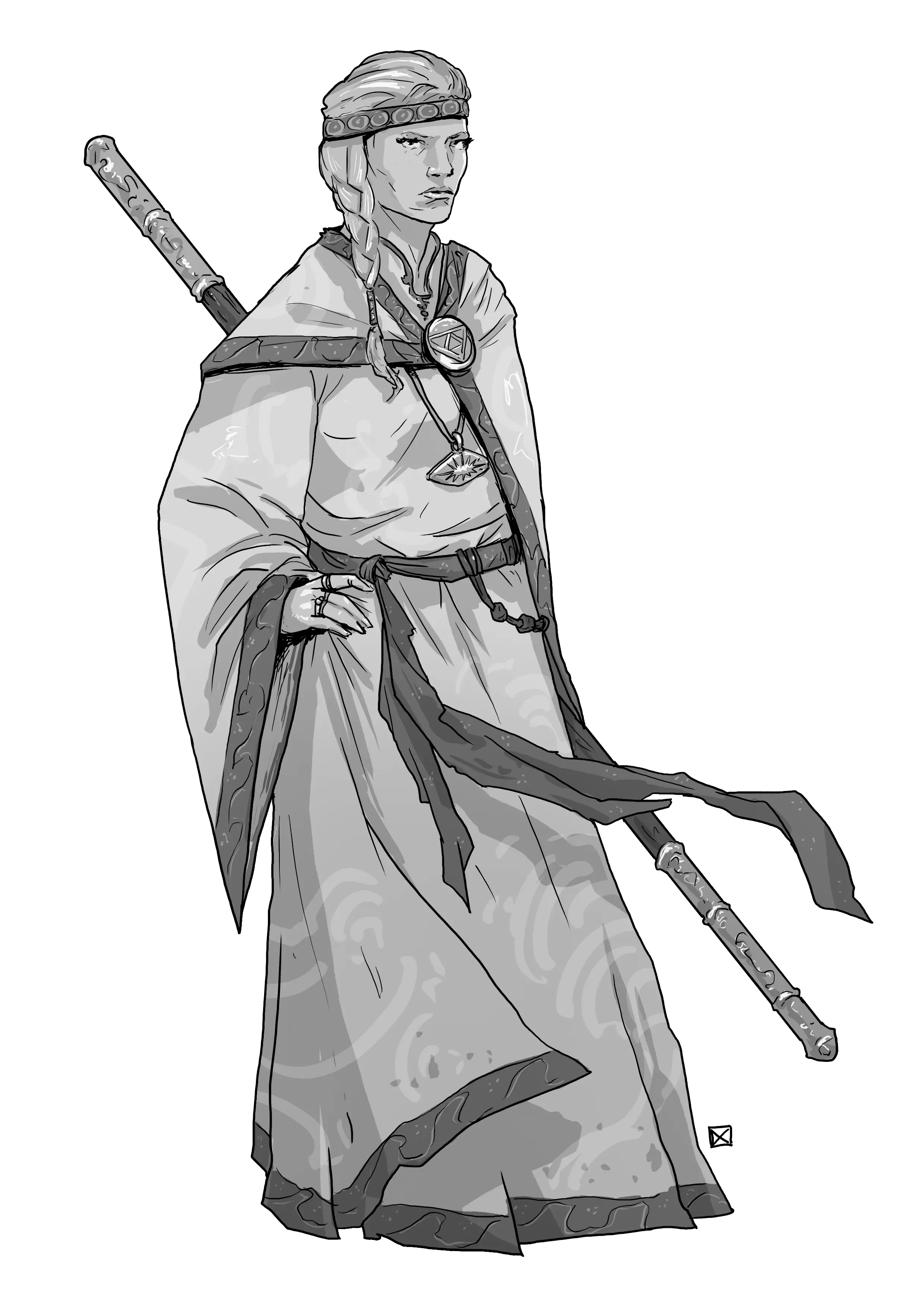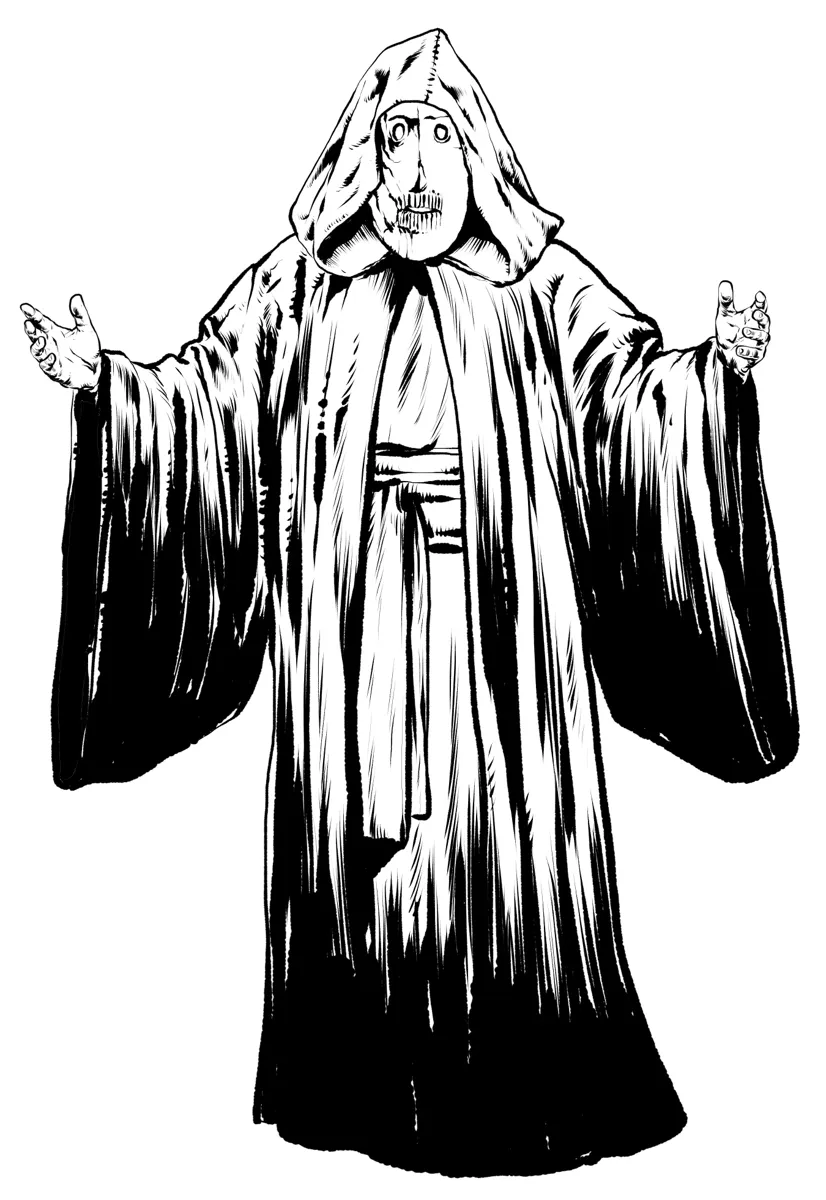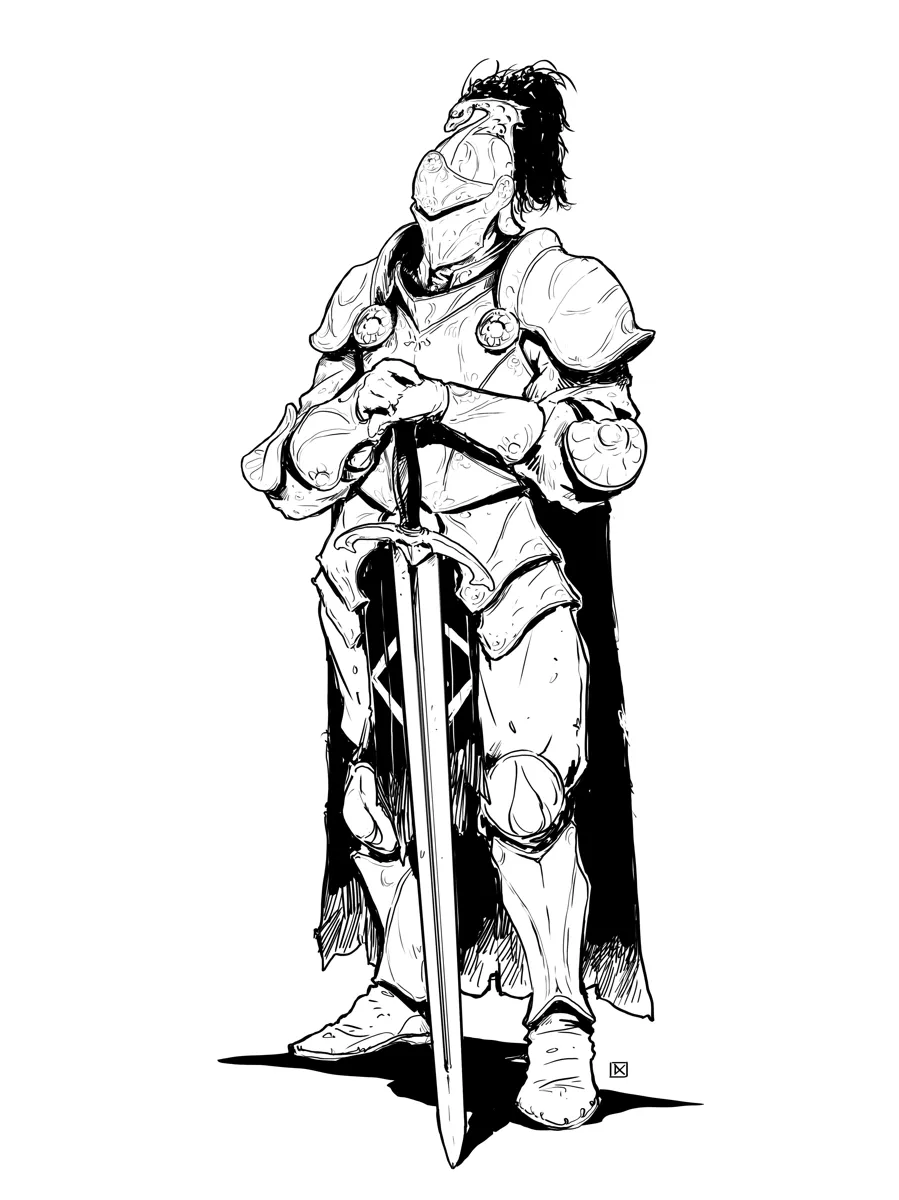Fanatics and Faithful
Faithful Followers of the Occult or Divine
Fanatics and faithful are devoted servants who channel power through belief — whether as priests serving distant gods, cultists worshipping dark forces, or knights sworn to sacred oaths. These NPCs bring divine mysteries and zealous conviction to 5E campaigns.
Need tips for how to run religion and faith in your RPG?
The default lore of Foe Foundry is a Low Magic Setting where divine beings do not directly communicate with mortals. If you run a setting where the gods are known to exist and actively intervene in the Mortal Realms then you can easily modify the lore to include direct involvement by the Gods. But it is much more difficult to remove the Gods from the Machine, so the lore is presented here with the least assumptions being made about your setting.
| Statblock Type | Description | Examples |
|---|---|---|
| Priests | Faithful Instruments of the Divine | Acolyte, Priest, Archpriest |
| Cultists | Worshippers of the Occult and Forbidden | Cultist, Cultist Fanatic, Death Cult Grand Master |
| Knights | Champions Bound by Armor and Oaths | Knight, Knight of the Realm, Questing Knight, Paragon Knight |
Priests
Faithful Instruments of the Divine
Priests are those rare mortals who find themselves as conduits to the Divine; through faith, perseverance, belief, or unusual circumstances.
The Distant Gods are silent and unknowable. Miracles are rare and mysterious. No priest can say for certain the true source of their power. Does it flow from a God, a Saint, or something more mysterious or sinister still?
What they do know is that their belief has power. The devout whispers, prayers, and rituals that Priests dedicate their lives to do sometimes lead to miracles. When the needy cry out, sometimes a light does come to their aid. Most priests find that belief on its own is difficult to wield, and find comfort in a rigid orthodoxy and ideology that enables them to manifest the power of their beliefs into tangible miracles.
There is no single road to becoming a conduit to the divine. Priests may be solitary mystics, village healers, war-chaplains, or archpriests leading massive temples. Some being their journeys with visions, and others with tremendous grief. For some Priests, the divine can be found through meditation, while others find it in compassionate or selfless service.
Explore priest statblocks and divine lore or check out an example priest statblock, the Archpriest.
Archpriest
Summoned with Foe FoundryMedium Humanoid (Priest)
AC 18 (Plate Armor) Initiative +5 (15)
HP 178 (21d8 + 84)
Speed 30 ft.
| Mod | Save | ||
|---|---|---|---|
| Str | 17 | +3 | +7 |
| Dex | 12 | +1 | +1 |
| Con | 18 | +4 | +8 |
| Mod | Save | ||
|---|---|---|---|
| Int | 12 | +1 | +5 |
| Wis | 22 | +6 | +10 |
| Cha | 12 | +1 | +1 |
Skills Religion +5, Insight +14, Medicine +14, Perception +10
Senses Passive Perception 20
Languages Common
CR 12 (8,400 XP; PB +4)
Traits
Armor Master. The priest reduces the amount of bludgeoning, piercing, and slashing damage it receives by 4.
Actions
Multiattack. The priest makes three Radiant Flame attacks. It may replace two attacks with a use of its Words of Righteousness or Spellcasting.
Radiant Flame. Ranged Spell Attack: +10 to hit, range 90ft., one target. Hit 24 (4d8 + 6) radiant damage.
Words of Righteousness. The priest speaks words of utter righteousness. Each creature of the priest's choice within 60 feet that can hear it must make a DC 16 Charisma saving throw. On a failure, the target takes 32 (13d4) radiant damage and is Dazed. The DM may decide that a creature has advantage or disadvantage on this save based on its actions and alignment. A Dazed creature can move or take an action on its turn, but not both. It cannot take bonus actions or free object interactions.
Spellcasting. The priest casts one of the following spells, using Wisdom as the spellcasting ability (spell save DC 18):
1/day each: Dispel Evil and Goodc, Dispel Magic (5th), Flame Strike, Greater Restoration, Mass Cure Wounds, Heal, Resurrection
Bonus Actions
Encouragement (3/day). The priest encourages another creature within 60 feet. The chosen creature gains 30 temporary hitpoints and may repeat a saving throw against any negative condition affecting them, ending that condition on a success.

Cultists
Worshippers of the Occult and Forbidden
Cultists are driven by devotion. Cults dedicate themselves towards powers or entities deemed unnatural, heretical, taboo, or alien. To others, these beliefs would be considered dangerous and unnatural, but to their own, they are seekers of forbidden truth.
Where Priests seek structure and hedge their prayers in rigid symbols and scripture, Cultists plunge headlong into devotion, pledging themselves to their cause.
Cults usually center around a singular leader who commands the absolute loyalty of all its members - a prophet, possessed oracle, or heretical priest. These leaders interpret the will of the cult's enigmatic patron and hold the loyalty of their followers through charisma or manipulation.
Many cultists are driven by ambition. They offer blood, loyalty, or sanity in exchange for power and miracles denied to them by the traditional belief systems. Some genuinely believe they are chosen to herald a great new age, while others simply seek power in exchange for service. Many cultists fall into a cult through desperation or isolation. To them, the cult offers meaning and belonging where society offers none. After all, the gods are distant and unknowable, so who is to say their faith is misplaced?
Cultists often claim their patrons are no more dangerous than the so-called “saints” of old. They ask: if a priest draws miracles from a silent god, and a cultist draws power from a whispering one, who is the true blasphemer? When power flows, and the gods remain silent, does it matter what name you cry out in the dark?
Check out more Cultists lore and statblocks or take a look at this example Death Cultist:
Death Cultist
Summoned with Foe FoundryMedium Humanoid (Cultist)
AC 16 (Unholy Armor) Initiative +5 (15)
HP 135 (18d8 + 54)
Speed 30 ft.
| Mod | Save | ||
|---|---|---|---|
| Str | 13 | +1 | +1 |
| Dex | 15 | +2 | +2 |
| Con | 16 | +3 | +3 |
| Mod | Save | ||
|---|---|---|---|
| Int | 12 | +1 | +1 |
| Wis | 15 | +2 | +5 |
| Cha | 20 | +5 | +5 |
Skills Religion +4, Deception +8, Persuasion +8
Senses Passive Perception 12
Languages Common
CR 8 (3,900 XP; PB +3)
Traits
Unholy Aura. The cultist and allies within 30 feet have advantage on saving throws against spells and other magic effects and against features that turn undead. Other creatures of the cultist's choice within 30 feet have disadvantage on saving throws against spells and other magic effects.
Actions
Multiattack. The cultist makes three Deathly Ray attacks. It may replace two attacks with a use of its Ray of Enfeeblement or Spellcasting.
Deathly Ray. Ranged Spell Attack: +8 to hit, range 90ft., one target. Hit 19 (4d6 + 5) necrotic damage. On a hit, the target gains Bleeding [10 (3d6) necrotic]. A bleeding creature suffers 10 (3d6) ongoing necrotic damage at the end of each of its turns. A creature may use an action to attempt a DC 10 Medicine check to end the condition. The condition also ends if the creature receives any magical healing.
Ray of Enfeeblement (Recharge 5-6). The cultist shoots a black beam of energy toward a creature it can can see within 60 feet. That creature must succeed on a DC 16 Constitution save or take 28 (8d6) necrotic damage. On a success, the creature takes half damage. On a failure, the creature is also Poisoned for 1 minute (save ends at end of turn). While poisoned in this way, the creature is Weakened. A weakened creature deals half damage with its spells and attacks and has disadvantage on Strength ability checks and saving throws. A creature that is immune to Exhaustion cannot be Weakened.
Spellcasting. The cultist casts one of the following spells, using Charisma as the spellcasting ability (spell save DC 16):
1/day each: Command (4th), Hold Personc (4th), Flame Strike, Mass Cure Wounds

Knights
Champions Bound by Armor and Oaths
Knights are elite warriors sworn to serve a cause greater than themselves. Many serve monarchs, faiths, or noble houses, while others pursue their own ideals. They are trained from youth in the arts of war, steeped in honor, and armored for battle. Whether rallying troops, dueling for glory, or riding into battle under sacred banners, knights blend martial skill with purpose.
Most are cavalry soldiers, but not all knights ride Warhorses. Some fight on foot or from the backs of exotic beasts such as a Griffon. A knight may command soldiers, uphold ancient codes, or seek redemption on a perilous quest. At higher ranks, knights swear divine oaths that grant them miraculous powers fueled by faith, conviction, or zeal.
Discover knight statblocks and tactics or check out an example knight statblock, the Knight of the Realm.
Knight of the Realm
Summoned with Foe FoundryMedium Humanoid (Knight)
AC 18 (Plate Armor) Initiative +4 (14)
HP 110 (17d8 + 34)
Speed 30 ft.
| Mod | Save | ||
|---|---|---|---|
| Str | 18 | +4 | +7 |
| Dex | 12 | +1 | +1 |
| Con | 14 | +2 | +5 |
| Mod | Save | ||
|---|---|---|---|
| Int | 12 | +1 | +1 |
| Wis | 17 | +3 | +6 |
| Cha | 15 | +2 | +5 |
Skills Athletics +7, Perception +6, Persuasion +5
Immunities Charmed, Frightened
Senses Passive Perception 16
Languages Common
CR 6 (2,300 XP; PB +3)
Traits
Armor Master. The knight reduces the amount of bludgeoning, piercing, and slashing damage it receives by 3.
Actions
Multiattack. The knight makes three Blessed Blade attacks. It may replace two attacks with a use of its Command the Attack, Overpowering Strike, or Spellcasting.
Blessed Blade. Melee Weapon Attack: +7 to hit, reach 5ft., one target. Hit 11 (2d6 + 4) slashing damage and 3 (1d6) radiant damage.
Command the Attack (1/day). The knight issues a command to all allied creatures within 30 feet. Creatures who can see or hear the knight can use their reaction to make a single weapon attack with advantage.
Overpowering Strike (Recharge 5-6). The knight makes an overpowering strike against a creature within 5 feet. The target must make a DC 15 Strength saving throw. On a failure, it takes 26 (4d12) slashing damage and is knocked Prone. On a success, it instead takes half damage.
Spellcasting. The knight casts one of the following spells, using Wisdom as the spellcasting ability (spell save DC 14):
1/day each: Lesser Restoration, Command (3rd), Cure Wounds (3rd)
Bonus Actions
Divine Smite (1/day). Immediately after hitting a target, the knight forces the target to make a DC 15 Constitution saving throw. On a failure, the target is Burning [11 (2d10) radiant]. A burning creature suffers 11 (2d10) ongoing radiant damage at the end of each of its turns. A creature may use an action to end the condition.
